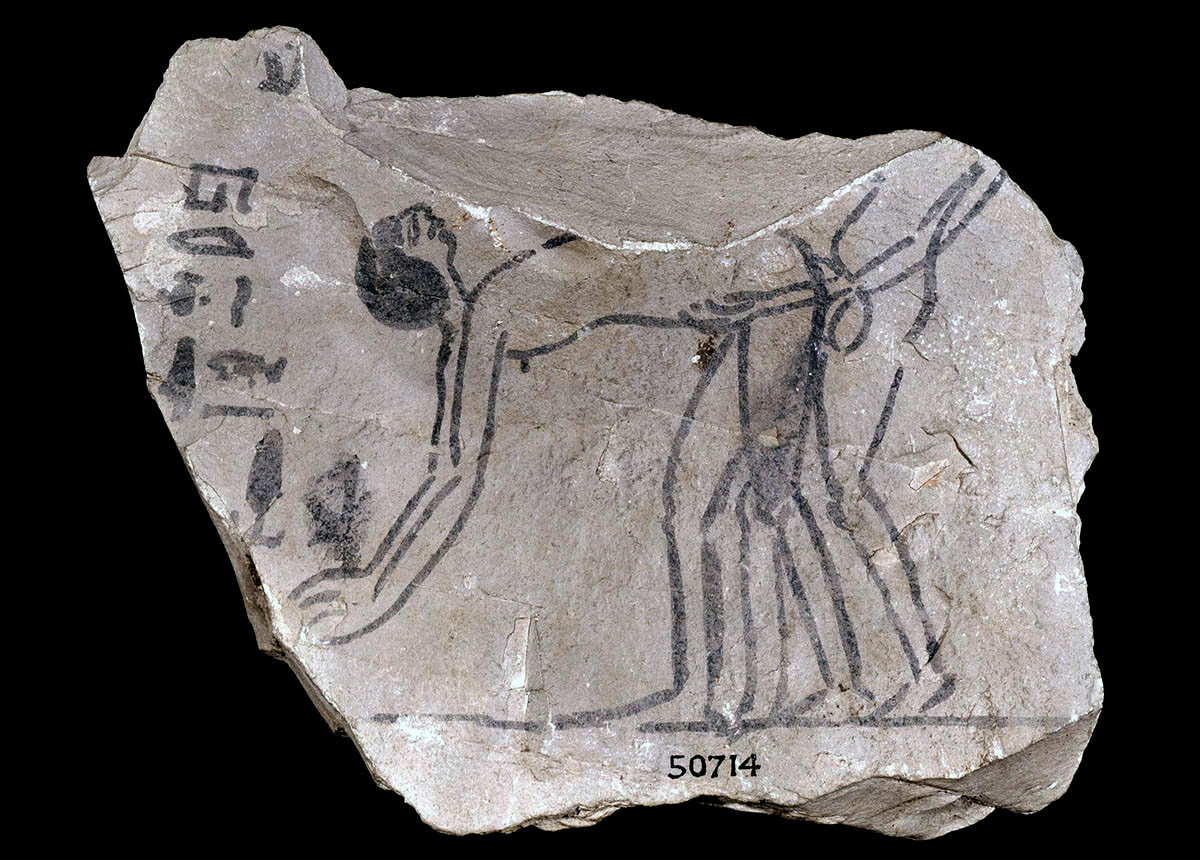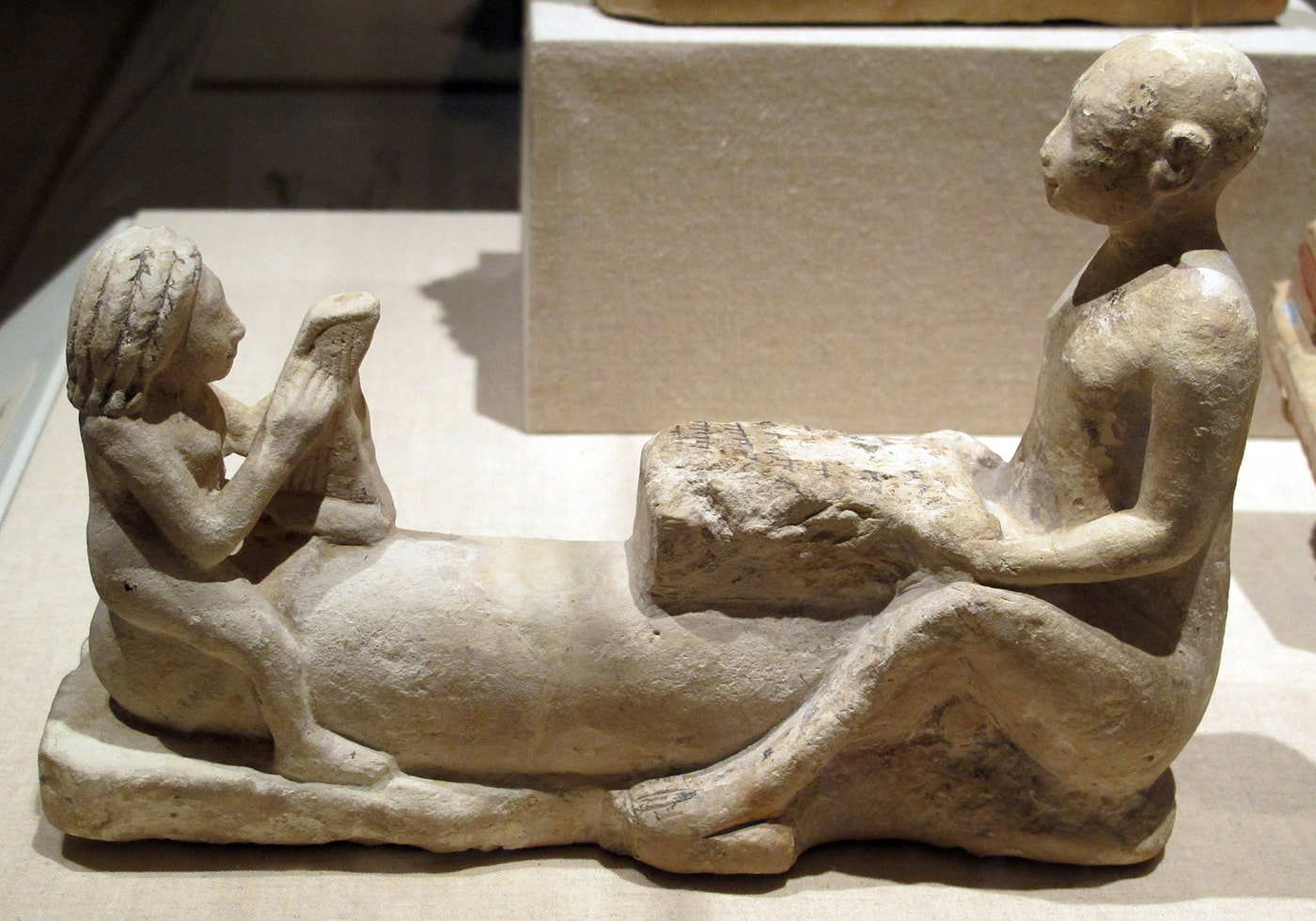
Content Warning: This post contains discussions that some readers may find sensitive or offensive. If you feel uncomfortable, it’s okay to stop reading. Reader discretion is advised.
If you were a fan of ancient Egypt from a young age, you probably remember learning in middle school about pharaonic times. Building pyramids, hieroglyphs, Tutankhamun, all the standard stuff. But what I am sure they never taught you about was sex in ancient Egypt. In this article, you will learn about lovemaking and the gods, sexual mores, and problems that people often suffered from in ancient Egypt.
1. The Beginning Of Creation Was By Masturbation

The very first Egyptian god was Atum, who created himself. He had no wife, so in order to beget his children, Shu and Tefnut, he masturbated.
The term “the god’s hand” came to be associated with females over time since Atum’s hand played the female role in the original creation. Royal women of Dynasty 18 often bore this title and it came to be very common as a title of the daughters of the Nubian kings who ruled Egypt in Dynasty 25. These daughters were responsible for the day-to-day administration of the country. Finally, in the Greco-Roman period, the term “god’s hand” came to be associated with fertility goddesses, a far cry from its origins thousands of years prior.
2. Another God Was Known For His Permanently Erect Phallus

Get the latest articles delivered to your inbox
Sign up to our Free Weekly Newsletter
The god Min was the primary male fertility god and par excellence associated with sex in ancient Egypt. He had a permanently erect phallus and wore a feathered headdress. Men suffering from impotence would make offerings of phallic figurines to the god. He was associated with lettuce as Egyptian lettuce emitted a white milky sap similar to semen.
Hilary Clinton visited Luxor Temple, where Min features prominently in the inner sanctum, in March 1998. Ray Johnson, director of the University of Chicago’s mission in Luxor to record the temple reliefs, gave her a tour. It was only 3 months after her husband had been impeached for lying about his affair with Monica Lewinsky. Dr. Johnson stood in front of a relief of Min and declared, “This is where it all began, the big bang!” Not surprisingly, the media focused on this in their reports about Clinton’s visit. Talk about knowing how to get a soundbite!
These figures of Min, are still the focus of magic rites in Egypt today. Men and women suffering from sexual or fertility problems visit ancient temples and rub Min’s phallus to overcome their problems. In many temples it is either worn down or darkened from the multitude of fingers that have touched it.
3. Adultery Was Punishable By Death

Like in any society, sex in ancient Egypt did not only take place within a marital context. Extramarital relationships surely existed. But they were not only frowned upon, but could be punished by death. A rather sordid affair is attested from the village Deir el-Medina where the workmen who built the tombs in the Valley of the Kings.
A chief workman named Paneb engaged in all sorts of nefarious behavior such as theft, corruption, and fighting. Adultery was one of his alleged crimes. He had intercourse with many married women and his son even joined him in his escapades with an unmarried woman. In one case, he raped a woman by ripping off her clothes and throwing her on top of a wall.
4. Sensuous Songs

You may be familiar with Solomon’s Song of Songs in the Bible. Or not, as it is a pretty risqué part of the holy book that they normally don’t teach in Sunday school, with racy descriptions of a woman’s body.
The ancient Egyptians sang similar songs. Here’s an excerpt describing a woman’s body using imaginative metaphors:
The one, the sister without peer,
The handsomest of all!
She looks like the rising morning star
At the start of a happy year.
Shining bright, fair of skin,
Lovely the look of her eyes,
Sweet the speech of her lips,
She has not a word too much.
Upright neck, shining breast,
Hair true lapis lazuli;
Arms surpassing gold,
Fingers like lotus buds,
Heavy thighs, narrow waist,
Her legs parade her beauty;
With graceful steps she treads the ground,
Captures my heart by her movements.
Egyptologists have long called these “love songs” sung by unmarried lovers. I believe they actually are songs sung at weddings.
5. The Egyptians Liked Porn

Before x-rated websites and before Playboy magazine, there was the Turin erotic papyrus. This papyrus shows a paunchy, balding, short and scruffy man having intercourse in some rather improbable positions with a beautiful woman. The purpose of the papyrus is unknown. It may actually be a form of political satire as a number of vignettes showing animals in human roles also appear on the same papyrus. No matter what the interpretation is, the Turin erotic papyrus is one of the most important documents we have in udnerstanding sex in ancient Egypt.
6. A Seductive But Crafty Woman

Women were sometimes portrayed as seductresses in Egyptian literature and culture. One of the most famous stories, “The Tale of the Two Brothers,” tells a story very similar to that of Joseph in the Bible and Quran.
Anpu’s younger brother Bata lived with him and his wife. One day, while they were doing farm work together, Anpu sent Bata to the house to fetch some grain sacks. His wife was plaiting her hair and when she saw Bata carrying five sacks on his shoulder, she told him she was impressed by his strength. She tried to seduce him. He became angry and refused her, but told her that he would not say anything to his older brother about what she did.
However, the wife feared that Bata would snitch and so she made herself up to look like she had been beaten up. When her husband returned home, she complained to her husband that it was Bata who tried to seduce her. She claimed that he told her to put on her wig (considered erotic) as he wanted to sleep with her, but she refused. Anpu became angry and was going to kill Bata. But he told him the truth about what happened and cut off his own penis and threw it in the water to prove his point, where fish promptly gobbled it up. Anpu went home, killed his wife, and fed her to the dogs.
7. The Evidence For Homosexuality Is Tenuous

The evidence for relationships between individuals of the same sex in ancient Egypt is sparse and controversial. There is only one clear case and that is in the myth of Horus and Seth. Seth and his nephew Horus were vying for the throne of Egypt. One night, Horus pretends to be drunk and Seth decides to take advantage of him and tries to rape him. But Horus tricks him by catching his semen in his hands.
Another possible incident of intercourse between indivduals of the same sex in ancient Egypt involves king Pepi II, the longest ruling king in history. A fragmentary papyrus contains a story where he is said to visit his general Sasenet at night and do as he pleased.
But perhaps the most commonly cited example of “homosexuality” in ancient Egypt is the tomb of Niankhkhnum and Khnumhotep. The two brothers are depicted on the walls of their unusual joint tomb, holding hands and rubbing noses. Rubbing noses is considered the way kissing was depicted in ancient Egyptian art. Such tomb scenes usually depict a man and his wife. However, there is no hard evidence that the two brothers engaged in any sort of incestuous relationship.
8. Sex Figured In Threats And Insults In Ancient Egypt

Sex in ancient Egypt figured in a number of insults, like “May you copulate with a donkey! May a donkey copulate with your wife! May your child copulate with your wife!”

A letter from one of the workmen who built the tombs in the Valley of the Kings to another workmen pointed out a bunch of his character flaws. One of the insults in this letter was: “You are not a man because you can’t get your wives pregnant like your fellow men.” Presumably, he had married more than once in an attempt to have children, with no results.
9. Impotence Was A Problem In The Absence Of Viagra

From the above letter, the implication is that the impotence to produce children or have sex in ancient Egypt was a huge problem. Indeed, the Egyptians recognized several potential causes.
Psychogenic impotence was attested in a wisdom text written by a man named Ochsheshonqy who wanted to pass on some sound advice to his son: “He who is shy is to have intercourse with his wife will not get children.” A similar proverb is still popular in Egypt today.
However, Egyptians were probably more likely to blame the malice of others for their inability to maintain an erection. While the evidence from pharaonic times is limited, from the Greco-Roman period until the present day, magical spells cast by rivals for one’s love interest often result in impotence. These spells often involve tying knots or fish in some way. This is reminiscent of the story of the Two Brothers you read about earlier where Bata’s penis was consumed by a fish.
10. Magic To Attract The Opposite Sex In Ancient Egypt

Voodoo dolls were one of the most common ways of casting magic in later times in Egypt. Sometimes this magic was directed at a woman by a man. In one case, a man had a magician make for him a voodoo doll of a woman he wanted no other man to have. The figurine was pierced with bronze nails and accompanied by a lead tablet inscribed with a spell. The spell wished that she would not be able to eat, drink or be with any other man besides him. The text summoned a demon to pull her by her hair and intestines until she came to him.








